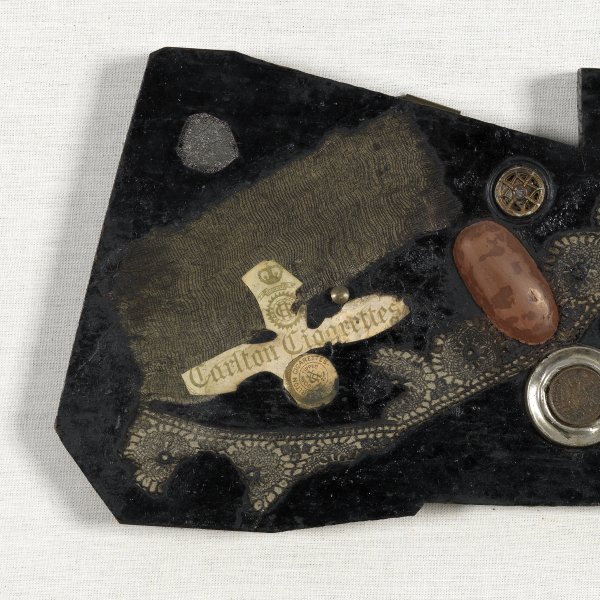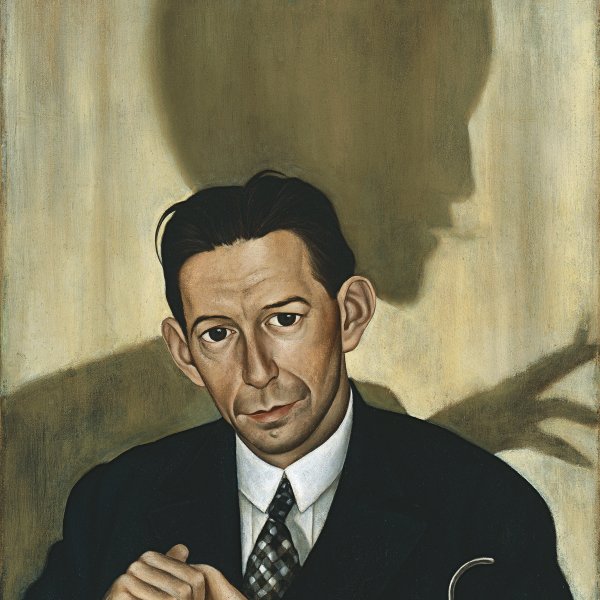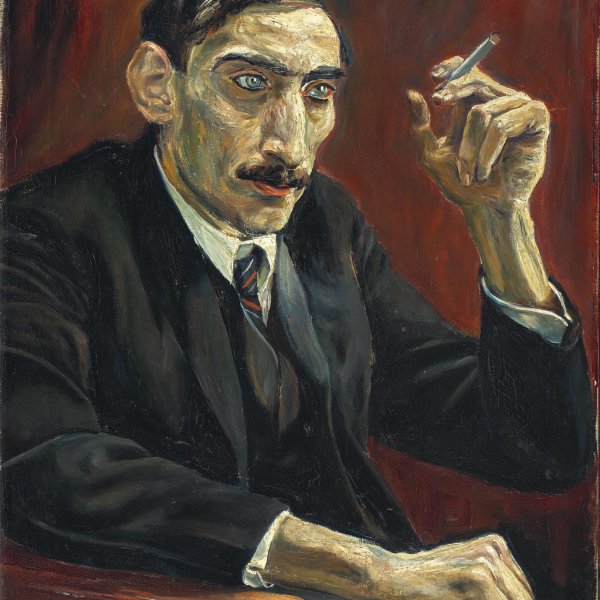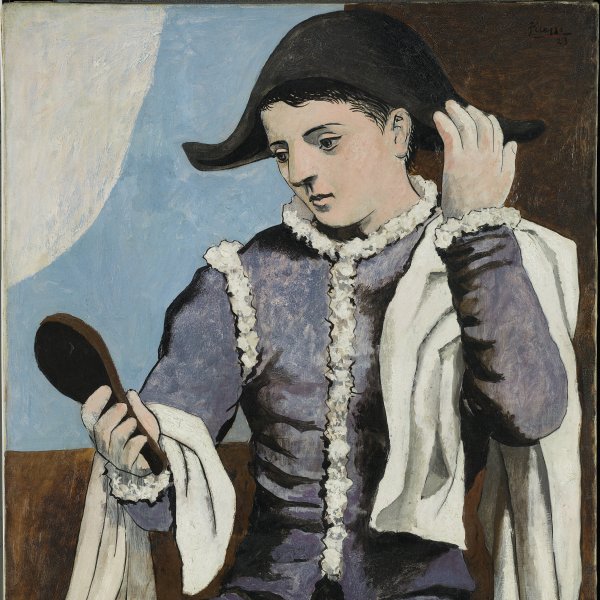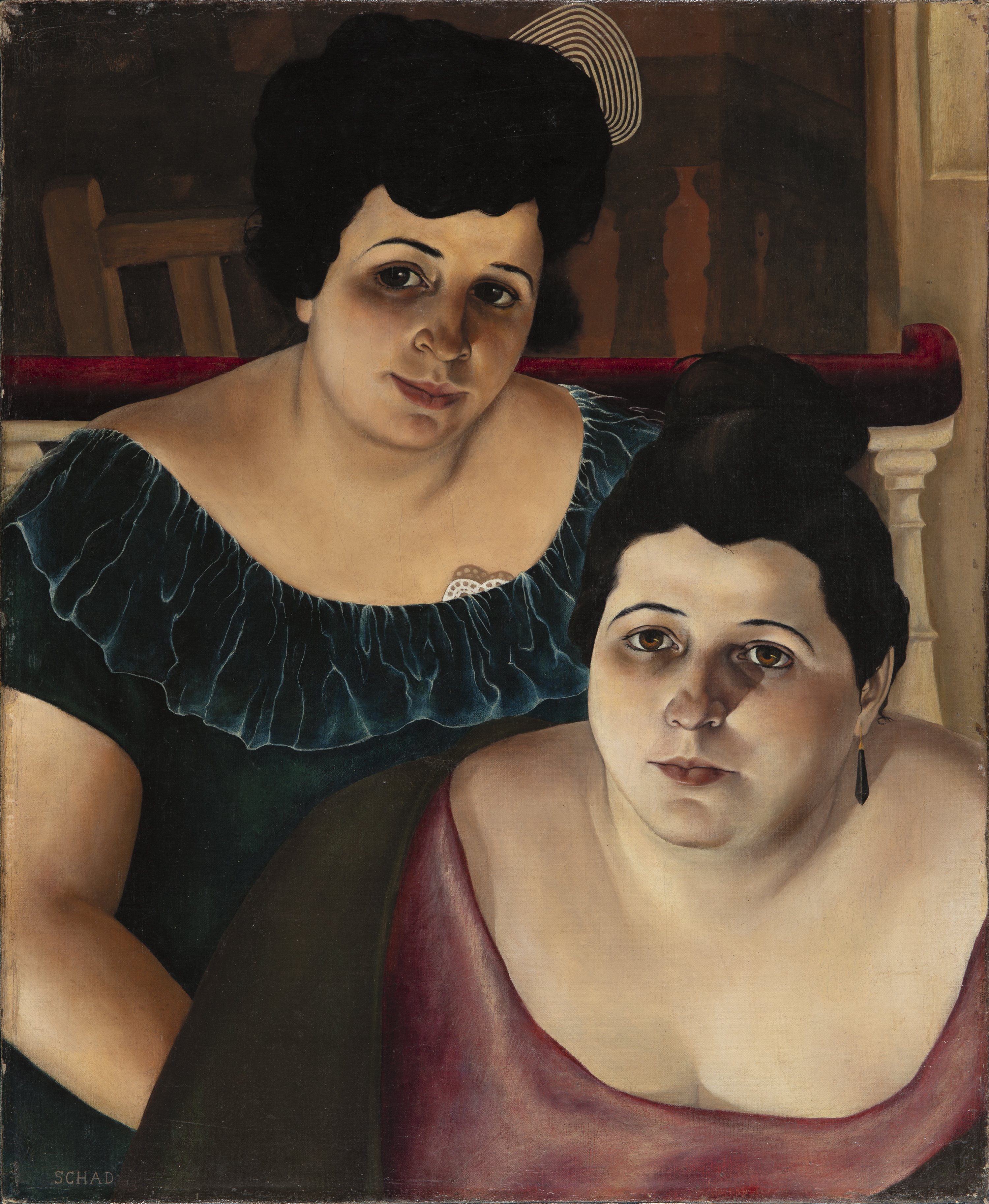Maria and Annunziata 'From the Harbour'
1923
Oil on canvas.
67.5 x 55.5 cm
Museo Nacional Thyssen-Bornemisza, Madrid
Inv. no.
734
(1979.8
)
Room 45
Level 1
Permanent Collection
Although he pursued part of his artistic career in Zurich, Italy and Vienna, the German painter Christian Schad remained affiliated with the new realist trends in his native country. However, although he might be included among the German artists of the Neue Sachlichkeit (New Objectivity) on the grounds of his realist precision and stylistic similarities, Schad was not represented at the movement’s inaugural exhibition and always denied any link with this trend.
Initially associated with Expressionism and subsequently with the Dada movement, when he went to live in Rome in 1920 and shortly afterwards in Naples he embarked on a new stage in his career under the influence of the Old Masters, particularly Raphael and his school. According to the painter’s own testimony, his new realist style, which would characterise his painting ever after, stemmed from the impression the sight of Raphael’s Fornarina in the Palazzo Barberini in Rome had had on him in 1920. Maria and Annunziata “from the Harbour, ” painted in Naples in 1923, is a good example of this influence. It is a portrait of two Neapolitan actresses of the Rossini theatre, which according to Schad stemmed from his need to show “in great detail the many manifestations of life on the streets.” The epithet “from the harbour, ” which was added by Schad, was how the artists were known to their admirers.
Schad’s technical mastery and obsession with capturing the tiniest detail with utmost precision endows the image with a lifelikeness that surpasses reality itself. As Simón Marchán comments, Schad’s realism “went beyond the appearance of the recognisable and displaced it to a paradoxical realm of unreality” and in the specific case of Maria and Annunziata, “the light, sliding over the skin, bathes the entire picture in a delicate transparency in which details and nuances emerge that would be hard to capture with our gaze.” The pose of the two women, who appear to be seated by the railing of a theatre box, and the powerful chiaroscuro effect created on their faces by a stage light, together with the close-up, fragmentary view that recalls the manner of a snapshot, suggest the influence of photography.
Paloma Alarcó
Initially associated with Expressionism and subsequently with the Dada movement, when he went to live in Rome in 1920 and shortly afterwards in Naples he embarked on a new stage in his career under the influence of the Old Masters, particularly Raphael and his school. According to the painter’s own testimony, his new realist style, which would characterise his painting ever after, stemmed from the impression the sight of Raphael’s Fornarina in the Palazzo Barberini in Rome had had on him in 1920. Maria and Annunziata “from the Harbour, ” painted in Naples in 1923, is a good example of this influence. It is a portrait of two Neapolitan actresses of the Rossini theatre, which according to Schad stemmed from his need to show “in great detail the many manifestations of life on the streets.” The epithet “from the harbour, ” which was added by Schad, was how the artists were known to their admirers.
Schad’s technical mastery and obsession with capturing the tiniest detail with utmost precision endows the image with a lifelikeness that surpasses reality itself. As Simón Marchán comments, Schad’s realism “went beyond the appearance of the recognisable and displaced it to a paradoxical realm of unreality” and in the specific case of Maria and Annunziata, “the light, sliding over the skin, bathes the entire picture in a delicate transparency in which details and nuances emerge that would be hard to capture with our gaze.” The pose of the two women, who appear to be seated by the railing of a theatre box, and the powerful chiaroscuro effect created on their faces by a stage light, together with the close-up, fragmentary view that recalls the manner of a snapshot, suggest the influence of photography.
Paloma Alarcó




